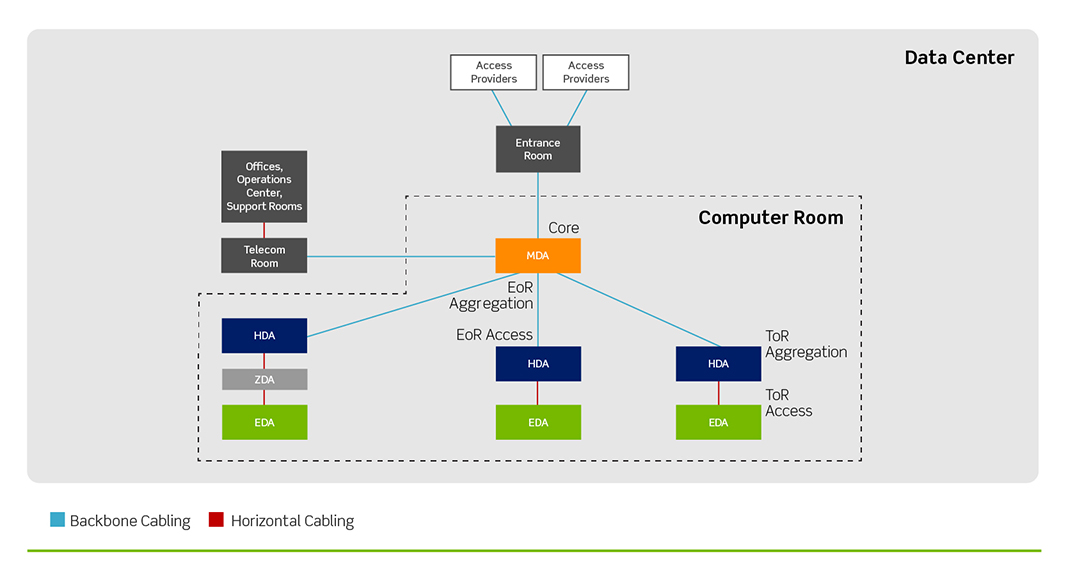Two-tier or spine-and-leaf architectures lead to an increase in top-of-rack and centralized switching topologies. These topologies result in more fiber in the Main Distribution Area (MDA).
With centralized switching, a centralized patching field is installed in the MDA serving as the main cross-connect patching location for all fiber channels in the data center. It can support cabling from network servers, core switches, the SAN, mainframe, and disk or tape storage.
This approach keeps things centralized to make network management easier. In larger facilities, the centralized patching field keeps moves, adds, and changes (MACs) much more manageable. And as a data center infrastructure grows, the management area doesn’t. Workers aren’t required to go to remote areas of a facility to do connection work: they’re able to handle it from the patching field.

Some tips for success:
- Replicate the switches or respective equipment devices, port for port to simplify maintenance and MACs
- A centralized patching field does not have to be centrally located: place your patching in a separate space to free up premium data center
- Redirected traffic at the patching field during equipment servicing or change outs to save time and lowering operating expenditures
Many data centers have begun adopting frames instead of traditional cabinets for their centralized patching field. They are capable of patching thousands of fibers, and are designed with cable management to alleviate the challenges of higher densities. For example, the Leviton HDX Fiber Distribution Frame has the ability to patch 3,168 LC fibers or 15,552 MTP fibers on only one 2x2 foot data center floor tile. It includes vertical and horizontal cable managers integrated ino the frame. It includes slack spools and cable clamps for properly routing cords and trunks, and unique patch decks with trays that handle horizontal cord management.




